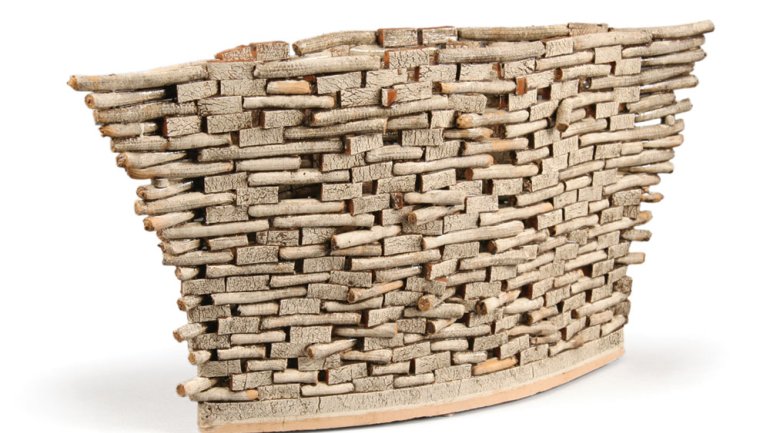Open Weave
Open Weave
Hibberd McGrath Gallery
Jim Kraft
Breckenridge, Colorado
August 1-24, 2008
Over a 30-year career the Seattle ceramist Jim Kraft has demonstrated the variety possible in handbuilding earthenware, having created indoor tile murals, vessels and sculptural pieces. Of the evolution of his work, he says, "I take certain elements that 'work' in one series and often build the next series based on those elements. These can include the color of the clay body, the colors of the surface treatment, the texture of the surface, the form or the building technique." Common to many of his works is the idea of smaller parts making up the whole, such as vessels made with extruded coils and brick-like pieces, or strips cut or torn from a clay slab, all to a basket-like effect.
Basketry is indeed the first association that comes to mind with works like Logjam or Lichen Wallet, both 2008, in the Hibberd McGrath show-they are "open weave" containers-but by no means the only one. These purposefully roughhewn works in irregular grid patterns also suggest weathered walls or makeshift fences. And new as these pieces are, their pale colors-arrived at by the application of dry colorants, clay slip and glaze at different stages of the building and firing processes-suggest both the ravages and the patina of time, which is no doubt Kraft's intent. "I would like to think my work-and the act of making the work-connects me with past cultures who used the same materials to make vessels for ceremony for everyday use," he says. "I like the idea of being a part of the long history of people making things with their hands."

